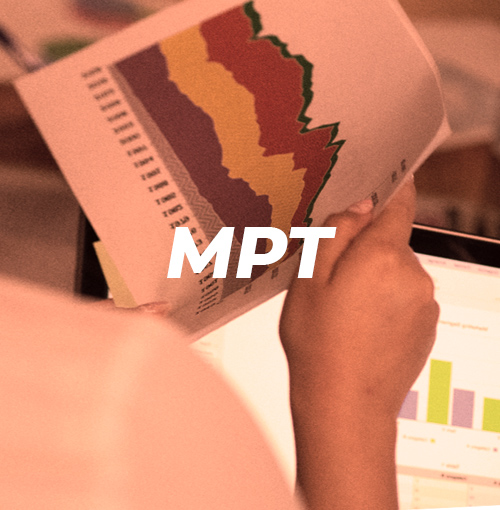
Equity Risk Premium (ERP) Explained: Insights and Calculations
In the fascinating realm of investment, the term 'Equity Risk Premium' (ERP) plays a pivotal role. To seasoned investors, this might be a familiar territory, but for newcomers, it's a concept worth delving deep into. This comprehensive guide explores the intricacies of ERP, why it matters, and how to best calculate it. Investora presents a detailed analysis that combines historical perspectives with contemporary insights, ensuring that readers grasp the core essence of the equity risk premium.
While the underpinnings of the Equity Risk Premium may seem complex, its importance in the financial sphere can't be overstated. For investors, it acts as a gauge to measure potential rewards against inherent market risks. As such, having a clear comprehension of ERP can greatly influence investment decisions, offering a clearer path to potential success in the volatile world of stocks and shares.
Tip: For those new to investing, before diving into stock choices, first get a solid grasp on the basics of concepts like ERP.
Interesting Fact: Historical data shows that during times of economic downturns, the ERP often sees noticeable fluctuations.
Unraveling the Concept of Equity Risk Premium
At its core, standard deviation is a statistical measure that sheds light on the average dispersion or variability of a set of data points. It's like an indicator that tells you how much your investments deviate from an average value. In the investment world, it provides clarity about how consistent the returns from a particular fund have been over time.
It's intriguing to note that while the concept of ERP has been in existence for decades, its application and interpretation have evolved over time. Various economic climates, from booms to recessions, have impacted the perception and value of the Equity Risk Premium. This dynamic shift underscores the significance of staying updated on contemporary interpretations of ERP, ensuring investment strategies remain relevant and effective.
Did you know? Did you know that the equity risk premium isn't fixed? Its estimation largely depends on historical market behaviors and the general economic environment, making it a moving target for investors.
How the Equity Risk Premium Mechanism Operates
When you dive into the stock market, you're essentially taking a leap of faith, banking on higher returns to offset the inherent risks. Any return surpassing a risk-free avenue like a U.S. Treasury bill or bond embodies the equity risk premium.
However, predicting the exact amount one might earn is challenging, given the unpredictability of market behaviors. Historical market performances, though illuminating, only give us a retrospective view. Their utility in predicting future returns is, therefore, limited.
The allure of the stock market often lies in its unpredictability. While this might deter some, others see it as an opportunity. Herein lies the essence of the Equity Risk Premium – it's a tool that helps bridge the gap between uncertainty and potential reward. By quantifying the extra return one might expect for taking on added risk, ERP offers a semblance of predictability in an otherwise volatile market environment.
Interesting Fact: Historical peaks in the ERP often coincide with major global financial events.
Breaking Down the Equity Risk Premium Calculation
The Capital Asset Pricing Model (CAPM) is often the starting point for understanding ERP. In essence:
Ra = Rf + βa (Rm - Rf)
- Ra = The Capital Asset Pricing Model (CAPM) is often the starting point for understanding ERP. In essence:
- Rf = Return of an equity investment.
- βa = Risk-free rate of return.
- Rm = Beta of the equity.
The actual calculation for ERP can be expressed as:
Equity Risk Premium = Rf + βa (Rm - Rf)
However, the real-world application and understanding of this formula isn't universal. For instance, while a significant section of economists staunchly believes in the ERP concept, there's skepticism regarding its precise calculation. Historical data indicates fluctuating ERP percentages over various decades, adding another layer of complexity to its understanding.
Remember: An equity's volatility, measured by its beta, directly influences the equity risk premium.
Beyond Traditional Calculations: Special Insights
While the aforementioned formulae provide a robust theoretical foundation, they don't capture all the nuances of the financial world. Estimating forward-looking returns, for instance, requires more intricate methods.
Two notable approaches include:
Using Dividends for Growth Estimation:
k = (D ⁄ P) + g
Here, D stands for dividends per share, P for price per share, and g represents annual dividend growth.
Employing Earnings Growth:
k = E ⁄ P
Where E is the trailing twelve-month earnings per share.
However, these methods have their limitations, primarily since they don't account for stock price corrections.
Fact: The risk-free rate, typically derived from U.S. government bonds, forms the backbone of these calculations. And while tools like Treasury inflation-protected securities (TIPS) provide inflation-adjusted rates, aspects like tax rates, often overlooked, can significantly sway the final returns.
Interesting Fact: Some of the world's most successful investors, like Warren Buffet, often emphasize the importance of intuition alongside calculations in making investment decisions.
The Equity Risk Premium stands as a testament to the intricate dance between risk and reward in the investment domain. Though rooted in complex calculations, its essence lies in understanding market behaviors, both past and prospective. As investors navigate the turbulent waters of the stock market, a keen grasp on ERP remains an invaluable compass.
- Share this article





